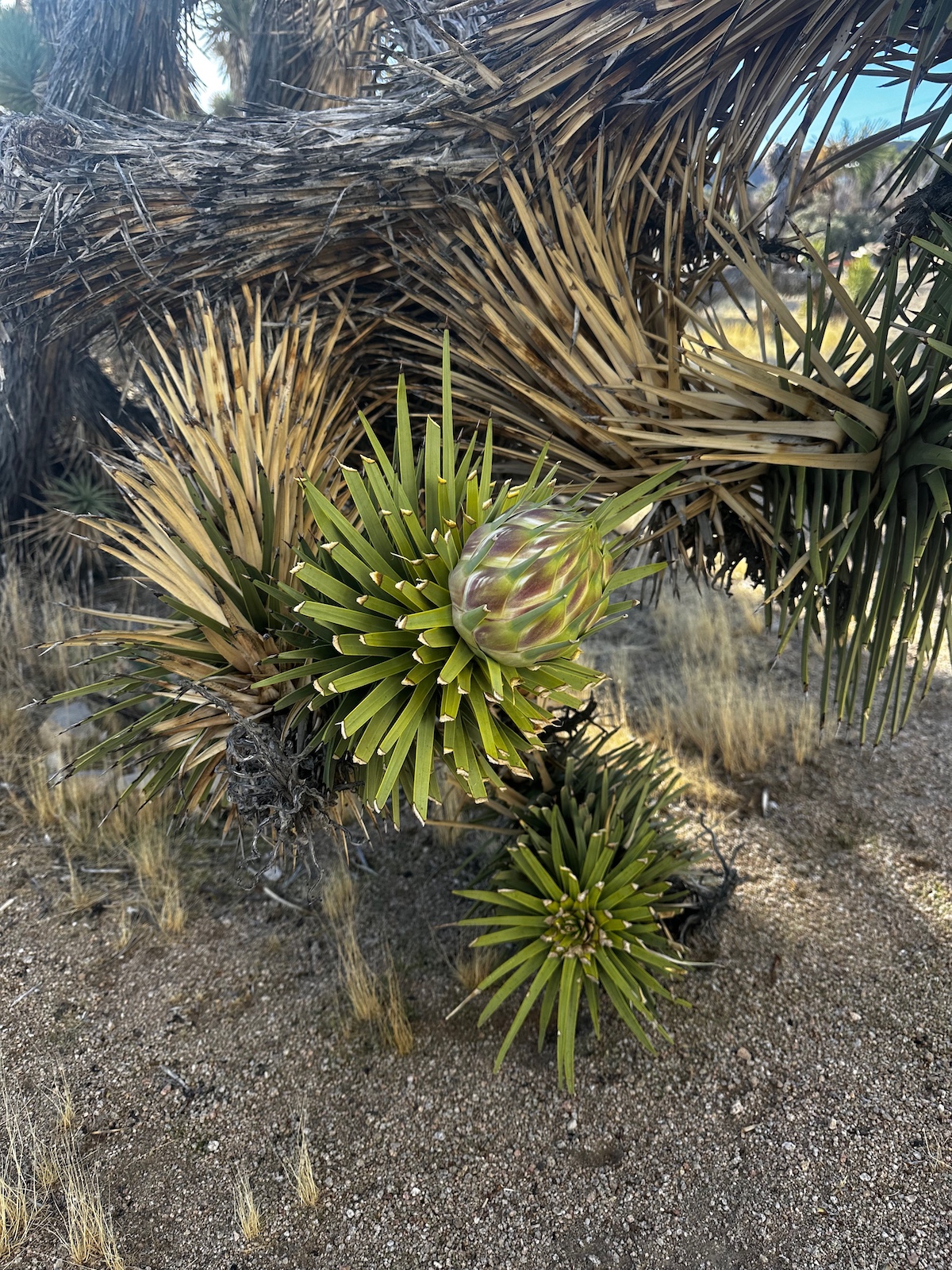The Flowering Manifesto to Every Budding Manuscript
You’ve been writing, writing, writing for weeks, months, maybe years. Your manuscript keeps expanding with new insights, deeper research, and ever more fascinating tangents. Yet somehow the end feels farther away than ever. Does this ring a bell?
For the authors I work with, that bell tolls doom. But it makes this Queen’s heart sing because I know how to turn that endless growth into something that blooms.
I learned this while writing from a desert throne beside Joshua trees: Endless growth doesn’t equal progress. In fact, it can prevent the very flowering you’re working toward.
On my first drive into the Mojave Desert, these strange trees fascinated me. I came from East Coast forests thick with predictable pines and maples, and Joshua trees seemed delightfully alien—spiky, awkward, growing in random directions. But the more time I’ve spent among them, the moreI have learned from their peculiar wisdom.
Some Joshua trees grow straight and tall, never flowering. Others branch dramatically, creating the iconic twisted silhouettes that tourists photograph. The ones that flower have weathered cold snaps—essentially, strategic interruptions that force them to branch, and eventually, to bloom.
Reading Your Manuscript’s Growth Pattern
Having collaborated on manuscripts through every stage of development—whether for museum exhibitions or startup founders—I’ve learned to spot the difference between manuscripts that are still growing straight up and those ready to branch into something that flowers.
The straight-up-tall manuscripts keep expanding: more chapters, deeper research, additional case studies. Their authors stay in creation mode because it is (admittedly) more fun to stay in the generating phase than dive into the cold, hard look of completing. I agree! But I know from experience that manuscripts can grow for years without ever blooming into books.
That’s because flowering manuscripts have stopped reaching skyward and started branching strategically—to meet the winds of market expectations and reader needs. Yes, some branches get wither or nibbled off by jackrabbits the size of small dogs. But fresh shoots will appear if the tree itself is healthy.

Cold Snaps Create Warm Writing
Joshua trees that flower have weathered interruption.Similarly, manuscripts often need deliberate breaks in momentum to develop the best material.
Royal case study: The memoir of a longtime civil servant was languishing for years, his passion for sharing his life lessons entombed in his computer files. When we began collaborating, we restructured and refocused, creating a strong outline and chapter plan. The strategic pause—that cold snap—allowed his stories to branch in new directions. The creation of new material began to flourish and gain speed. His book will be published this year—from computer files to bookshelf, a true flowering.
The Queen’s tip: If your manuscript has grown beyond your original outline (or no royal judgment, you never had one), create a reverse outline. List what each existing chapter actually covers, then ask: “What story is this telling?” Often, you’ll discover your book has been trying to branch in a specific direction—follow that growth surge and see where it goes. Before you feel lost in the overgrowth, redo the reverse outline and see if the chapters get closer to an end. (And btw, it’s worth doing yourself, without AI, to train your brain for convergent thinking to support your divergent thinking.)

The Co-Evolution of Creative Partnerships
Switching between growth and pruning isn’t for everyone—most people prefer one or the other, while professional collaborators thrive on being able to do both. In the desert, Joshua trees and their yucca moths have evolved together—each enabling the other to thrive, but with natural limits. The moth pollinates the tree, but the tree won’t allow unlimited egg-laying. Both species benefit, but boundaries ensure survival.
Your manuscript may flourish with this kind of strategic partnership. My role is helping you determine what serves the flowering process and what doesn’t. After two decades of working across fintech, memoirs, art books, and everything between, I’ve developed an eye for recognizing which ideas need more generating and which need strategic pruning.
The breakthrough happens when we harness these cycles—growth, pruning, more targeted growth—to make meaningful progress instead of endless motion.
Let’s explore when your manuscript is ready to stop growing and start blooming! Contact me to discuss where you are at in your book journey.
Elizabeth Smith is a ghostwriter, developmental editor, and book strategist with two decades of publishing experience—and a southpaw with a mean right hook. Between a NYC boxing gym and her Mojave Desert maison, she helps thinkers, creatives, and organizations articulate their ideas through books that resonate deeply. Ready to transform your vision into a book with impact? Let’s connect!




